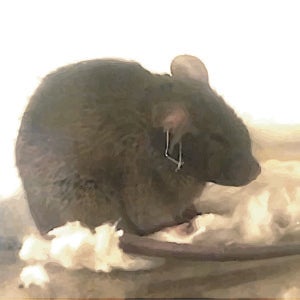by Sinisa Hrvatin
The tundra is quiet as another harsh winter arrives. Snow has covered the last bit of food, and the cold arctic winds have sent away all but a few animals. The arctic ground squirrel retreats to her underground den. With soil temperatures of -10°C and no food in sight for months to come, she curls into her nest. Her movement stops, her breath, heart rate, and metabolism slow, and her body temperature drops to nearly freezing. She enters the first of many bouts of torpor which will allow her to conserve energy and survive this long arctic winter.

Mouse in torpor
Torpor and hibernation, which enable the arctic ground squirrel to live through the winter, are some of the most fascinating natural adaptations of warm-blooded animals. How birds and mammals initiate, regulate, and survive these extraordinary hypometabolic and hypothermic states remains largely unknown. Among the many species capable of these behaviors are laboratory mice, which when fasted for as few as six to ten hours enter torpor – a state of decreased metabolic rate, locomotion, and body temperature as low as 20°C.
We wondered how the brain controls mouse torpor and if we could find neurons which, when stimulated, would induce torpor. Using a “FosTRAP” transgenic approach, we first labeled neurons that were active during torpor and subsequently re-stimulated different sets of those neurons. We observed that when we reactivated neurons in the preoptic areas of the hypothalamus, the mice rapidly decreased their body temperature, metabolic rate, and activity, similar to how they naturally enter torpor. Our study characterized these neurons using single-cell RNA-sequencing and observed that they are active whenever animals enter torpor and that when silenced, natural torpor is disrupted. Together these findings identify a key population of neurons that regulate torpor, and form the basis for future explorations of mechanisms regulating torpor and hibernation.
This story also appears in HMS Neurobiology newsletter, The Action Potential.
Sinisa Hrvatin is a postdoc in the lab of Mike Greenberg at Harvard Medical School.
Learn more in the original research article:
Neurons that regulate mouse torpor. Hrvatin S, Sun S, Wilcox OF, Yao H, Lavin-Peter AJ, Cicconet M, Assad EG, Palmer ME, Aronson S, Banks AS, Griffith EC, Greenberg ME. Nature, 11 June 2020.
News Types: Community Stories
